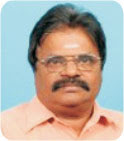Broadband to Resurge Rural India
The agro-product trading and direct interaction of village Chaupal/Kisan Haat with city-based Mandi will be a reality, if we develop a policy keeping rural India in priority as far as broadband technology deployment is concerned.
Broadband has the potential to improve the literacy rate and better the medical facilities -- particularly in rural India. Undoubtedly, differences between alternative and more traditional distance education are being realized through extensive use of the broadband related tools, and applications.
Several advantages are associated with reduced duplication and greater access in distance learning -- particularly for highly specialized courses. Broadband will provide specific Internet-related interactive opportunities that India can exploit to distinguish ourselves from more traditional distance education delivery systems.
Education
The value-added component of a distance education course with a remote or virtual laboratory is fundamental for a successful distance education program -- particularly in highly specialized areas such as engineering, medical, media, etc. Universities have different sub-disciplinary expertise, and within a sub-discipline, there are specialties that can be exploited.
The major difficulties faced while developing distance education course are: technical and psychological problems. For any given course, the appropriate combination of the 3 modes of communication, i.e., formal lecture, the virtual laboratory, and interactivity, will minimize the cost and maximize the effectiveness of the learning process.
Broadband for Distance Training
One obvious method is the formal, televised lecture in which the instructor delivers a conventional lecture to a group of students in a multimedia classroom and simultaneously to groups of students in remote, television-equipped classrooms.
Formal lectures incorporate some aspects of a television production. That is, they include "talking head" didactic segments, interspersed with video clips, still photos, diagrams, computer "white boards," and so on.
However, there is also a 2-way audio, video, and data communication between the originating site and the remote sites, so that all students have real-time access to the instructor and vice versa.
Although the formal lecture is an important element in distance education, yet it has its limitations. It's expensive, both in terms of the TV studios-classrooms required and the large bandwidth required for audio, video, and data communication among sites.
Furthermore, the TV lecture doesn't lend itself to the type of interaction that occurs between an instructor and subgroups of the class, in a laboratory, or tutorial setting. It doesn't provide the laboratory component, nor does it allow for detailed interaction between individual students and the instructor. Thus, alternative distance communication media must be used to supplement the expensive televised lecture. And that could be web-based application -- using wireless or wireline broadband connectivity at the last mile.
The facilities required are a workstation or laboratory environment supported by a reasonable communications network and software. There is a major opportunity here to design team-based projects that require the students to participate in a design project over geographically remote distances.
A main advantage and attraction of this type of laboratory is that the receiving institution doesn't need to invest heavily in the staff and equipment required to maintain the virtual environment.
"Learning Technologies Center" at Villages
These centers could be utilized for training as well as trading. It should incorporate electronic multimedia distance education classrooms, clusters of networked multimedia work stations, and classrooms equipped with networked computers and video projection equipment to support computer interaction among the instructor and the students.
The objectives of the Learning Technologies Center could be:
1. To provide interactive virtual platform to farmers for trading with city Mandi
2 . To support sharing of courses with other universities and community colleges
3. To provide access to seminars, workshops, and educational materials from many sources
4. To train local village-based academic staff in the use of the modern learning technologies
5. To be a demonstration facility for staff, students, and the public in the use of modern technologies
- The writer is the managing director of Digital Broadcasting
courtesy :www.enterpriser.in/
Friday, May 9, 2008
Subscribe to:
Post Comments (Atom)

































No comments:
Post a Comment